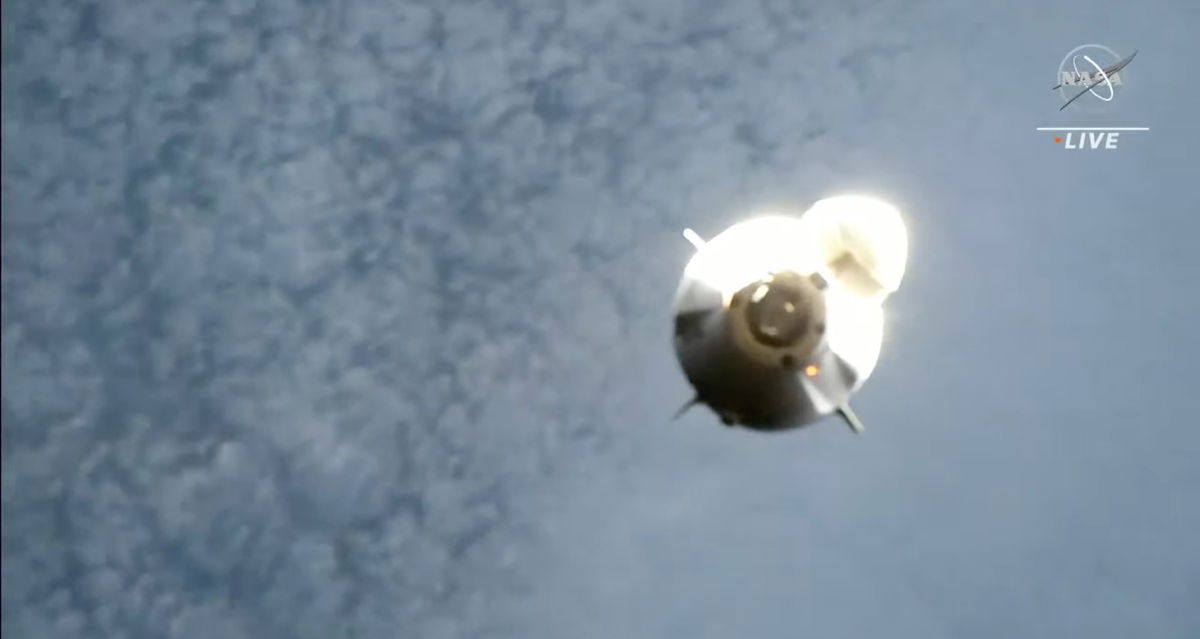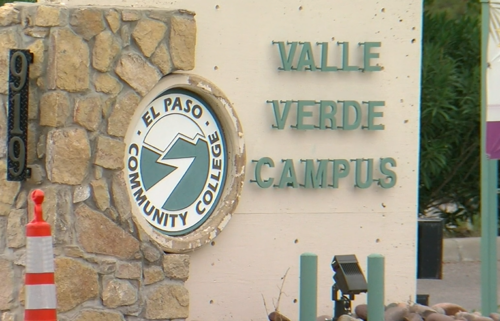After slight delay, SpaceX astronaut capsule docks at space station

The SpaceX Crew Dragon capsule
By Jackie Wattles, CNN
A crew of astronauts aboard a SpaceX Crew Dragon capsule docked at the International Space Station, concluding a one-day trip to rendezvous with the orbiting laboratory after launching from Florida early Thursday.
The capsule made first contact with the space station at 1:40 a.m. ET Friday and began opening the hatches at 3:45 a.m. EST.
The spacecraft was slated to dock with the ISS around 1:15 a.m. ET, but it was delayed as ground crews worked to troubleshoot an issue with a sensor on the capsule’s docking hardware, which is used to latch the vehicle onto its port.
Engineers on the ground grappled with the same issue in the early hours of Thursday morning, just after the Crew Dragon capsule reached orbit. A faulty sensor had caused issues when trying to lift the spacecraft’s nose cone, which protects the docking hardware during launch and is meant to pop open after reaching space. Ground teams, however, were able to use a backup system to fix the problem.
The capsule was then forced to hold its position on Friday morning as it sat about 70 feet (20 meters) from the space station, and engineers worked in real-time to find a solution.
About this mission
Hailing from three different countries, the Crew-6 team includes NASA astronauts Stephen Bowen, a veteran of three space shuttle missions, and first-time flyer Warren “Woody” Hoburg. Sultan Alneyadi, who is the second astronaut from the United Arab Emirates to travel to space, and Russian cosmonaut Andrey Fedyaev round out the crew.
They’re expected to spend up to six months in space, conducting science experiments and carrying out routine maintenance on the two-decade-old space station. Over the next few days, the Crew-6 astronauts will work to transition duties from the four members of the Crew-5 team, who have been on the space station since October 2022.
The Crew-5 astronauts — who include Nicole Mann and Josh Cassada of NASA, astronaut Koichi Wakata of JAXA, or the Japan Aerospace Exploration Agency, and cosmonaut Anna Kikina of Russia’s space agency, Roscosmos — are expected to return home in the coming days, once the operational hand-off to Crew-6 is complete.
Bowen, Hoburg, Fedyaev and Alneyadi will oversee more than 200 science and tech projects, including researching how some substances burn in the microgravity environment and investigating microbial samples that will be collected from the exterior of the space station.
The Crew-6 mission comes as the United States’ primary partner on the space station, Roscosmos, is working through an unrelated transportation issue. In December, a Russian Soyuz spacecraft that had been used to transport cosmonauts Sergey Prokopyev and Dmitri Petelin and NASA astronaut Frank Rubio to the orbiting laboratory sprang a coolant leak. After the capsule was deemed unsafe to return the astronauts to Earth, Roscosmos launched a replacement vehicle on February 23.
Upcoming missions to the space station
The Crew-6 astronauts will also host two other key missions that will stop by the space station during their stay. The first is the Boeing Crew Flight Test, which will mark the first astronaut mission under a Boeing-NASA partnership. Slated for April, the flight will carry NASA astronauts Barry Wilmore and Sunita Williams to the orbiting laboratory, marking the last phase of a testing and demonstration program Boeing needs to carry out to certify its Starliner spacecraft for routine astronaut missions.
Then, in May, a group of four astronauts are scheduled to arrive on Axiom Mission 2, or AX-2 for short — a privately funded spaceflight to the space station. That initiative, which will deploy a separate SpaceX Crew Dragon capsule, will have as its commander Peggy Whitson, a former NASA astronaut who is now a private astronaut with the Texas-based space company Axiom, which brokered and organized the mission.
Similar to Axiom Mission 1, which visited the space station in April 2022, it will also include three paying customers, including the first astronauts from Saudi Arabia to travel to the orbiting lab. Their seats were paid for by the Kingdom of Saudi Arabia.
The-CNN-Wire
™ & © 2023 Cable News Network, Inc., a Warner Bros. Discovery Company. All rights reserved.



